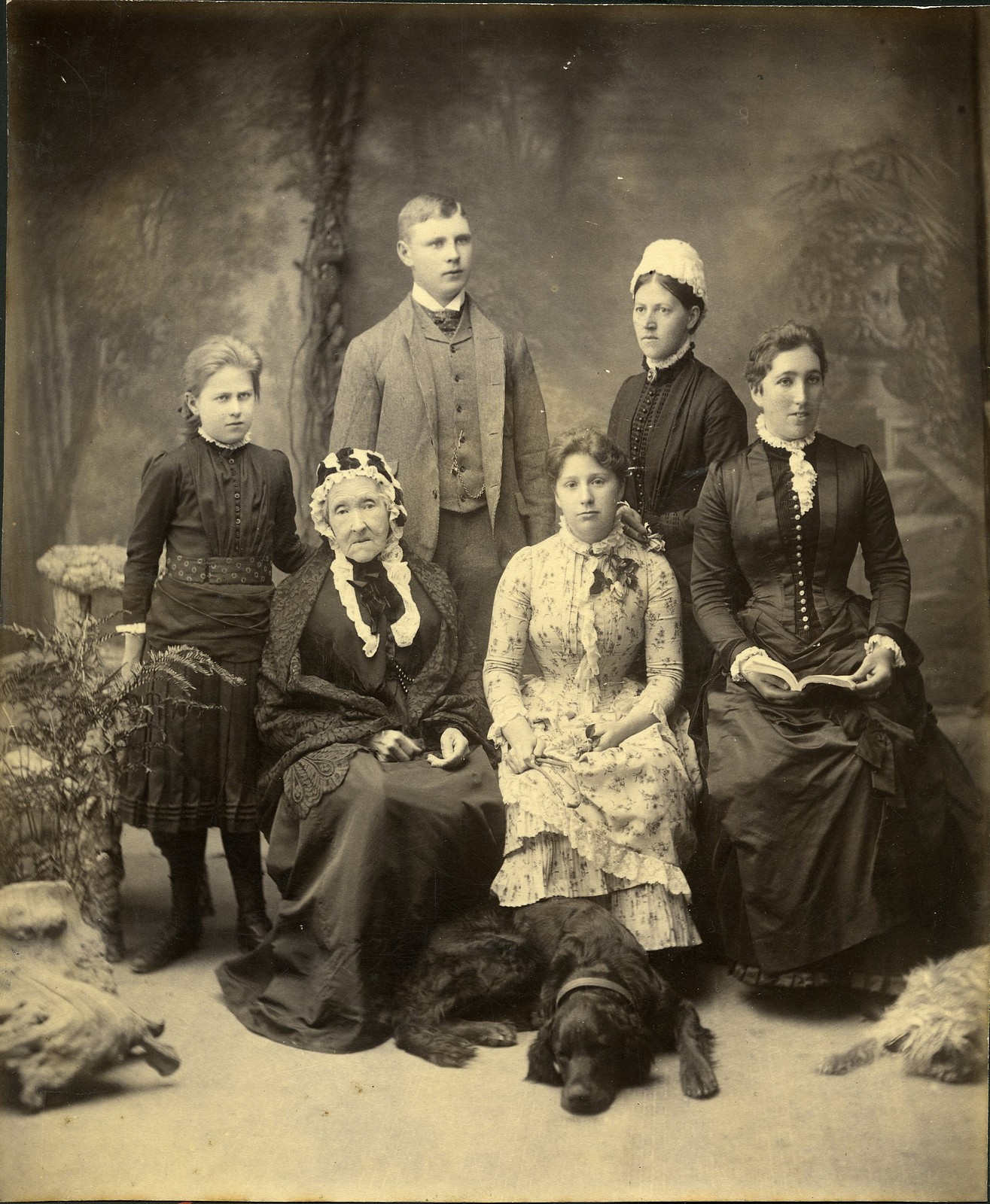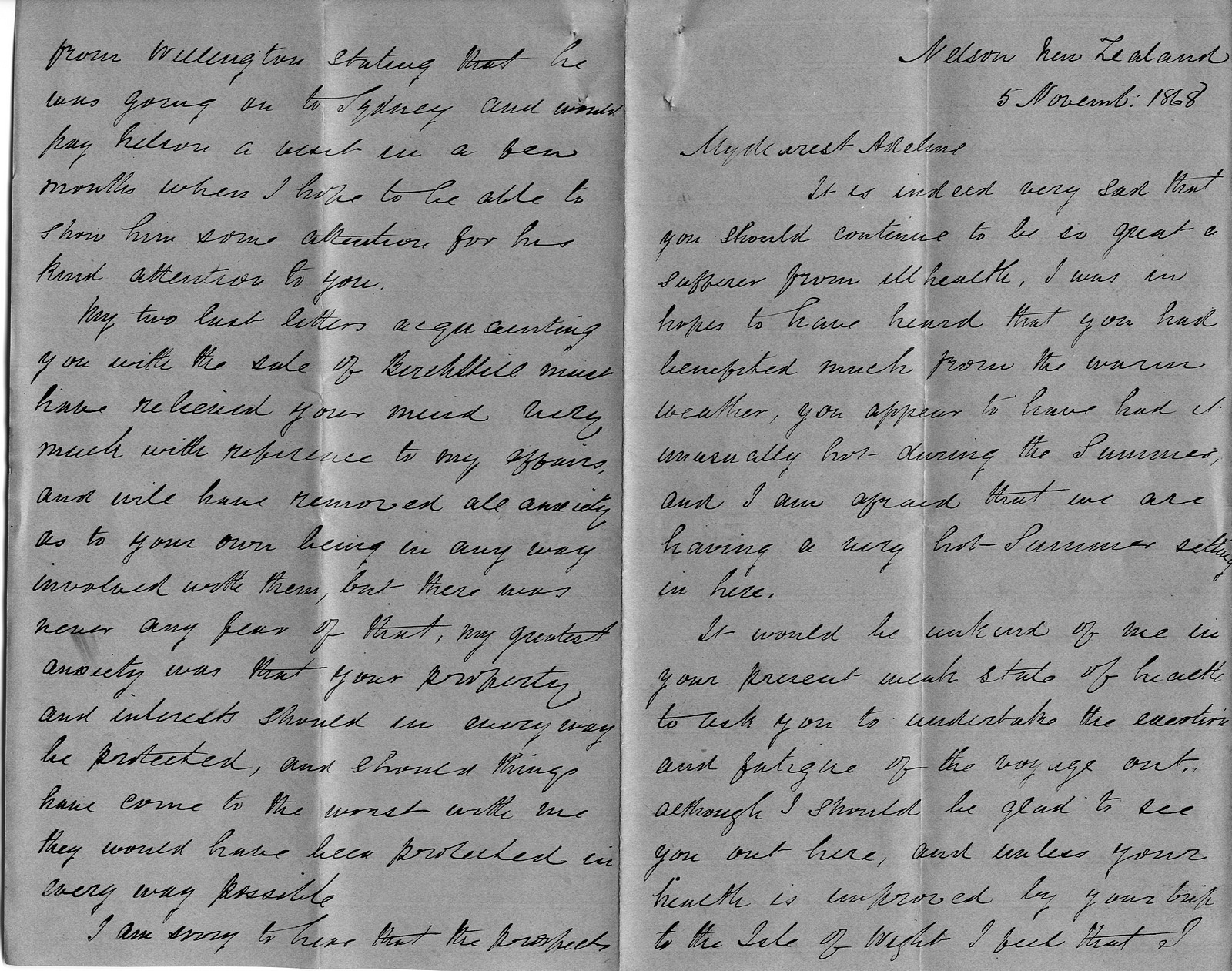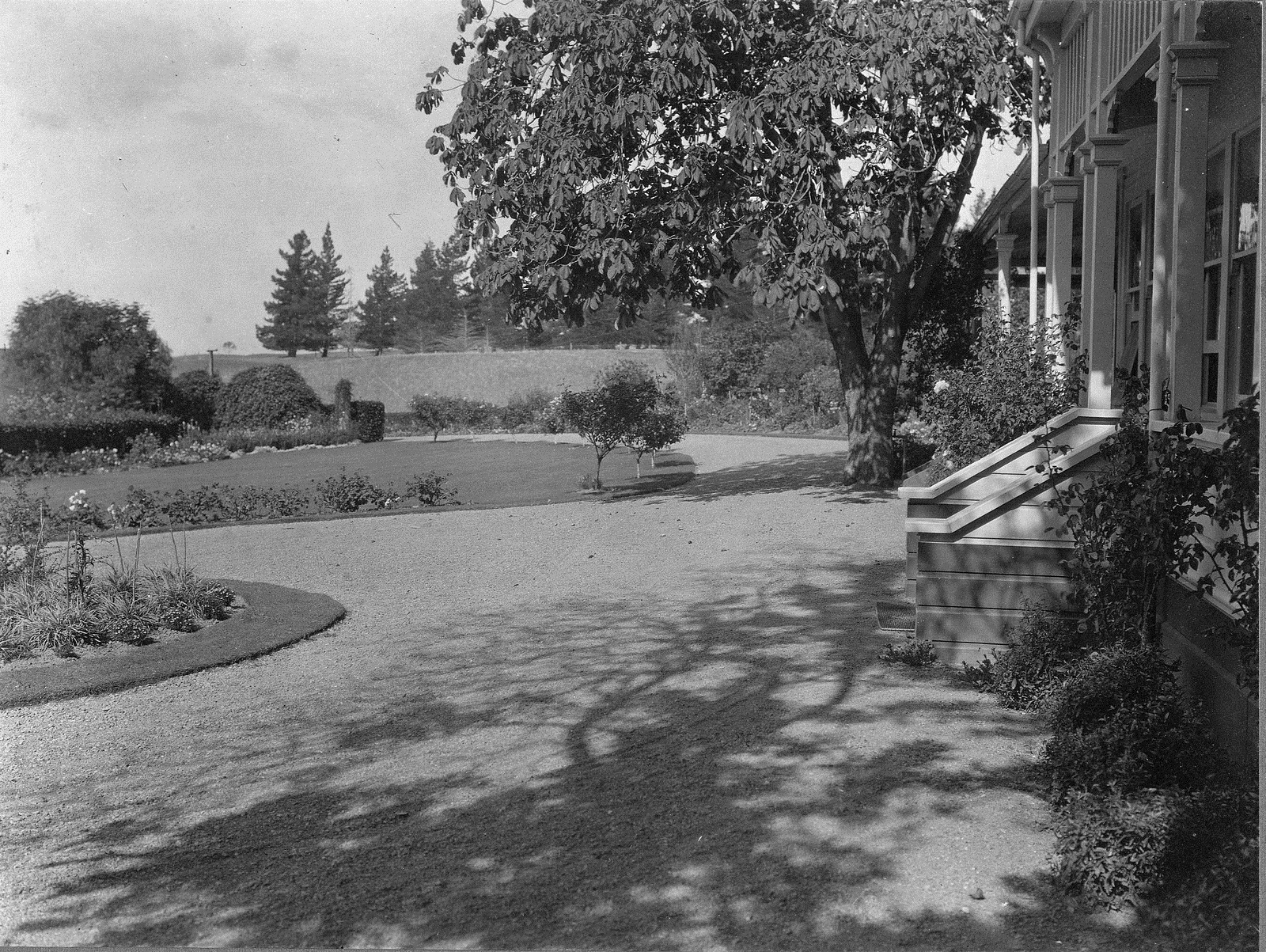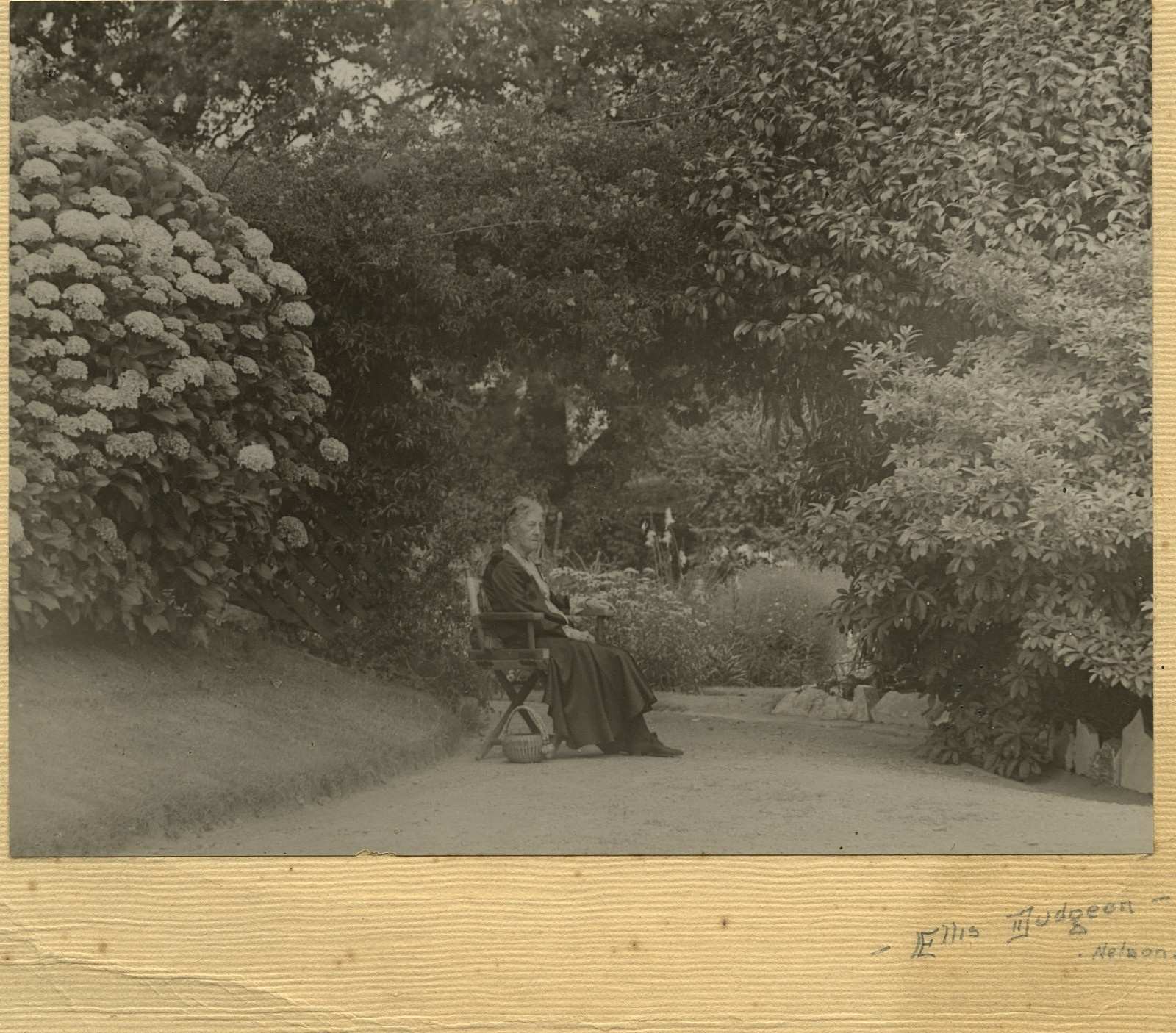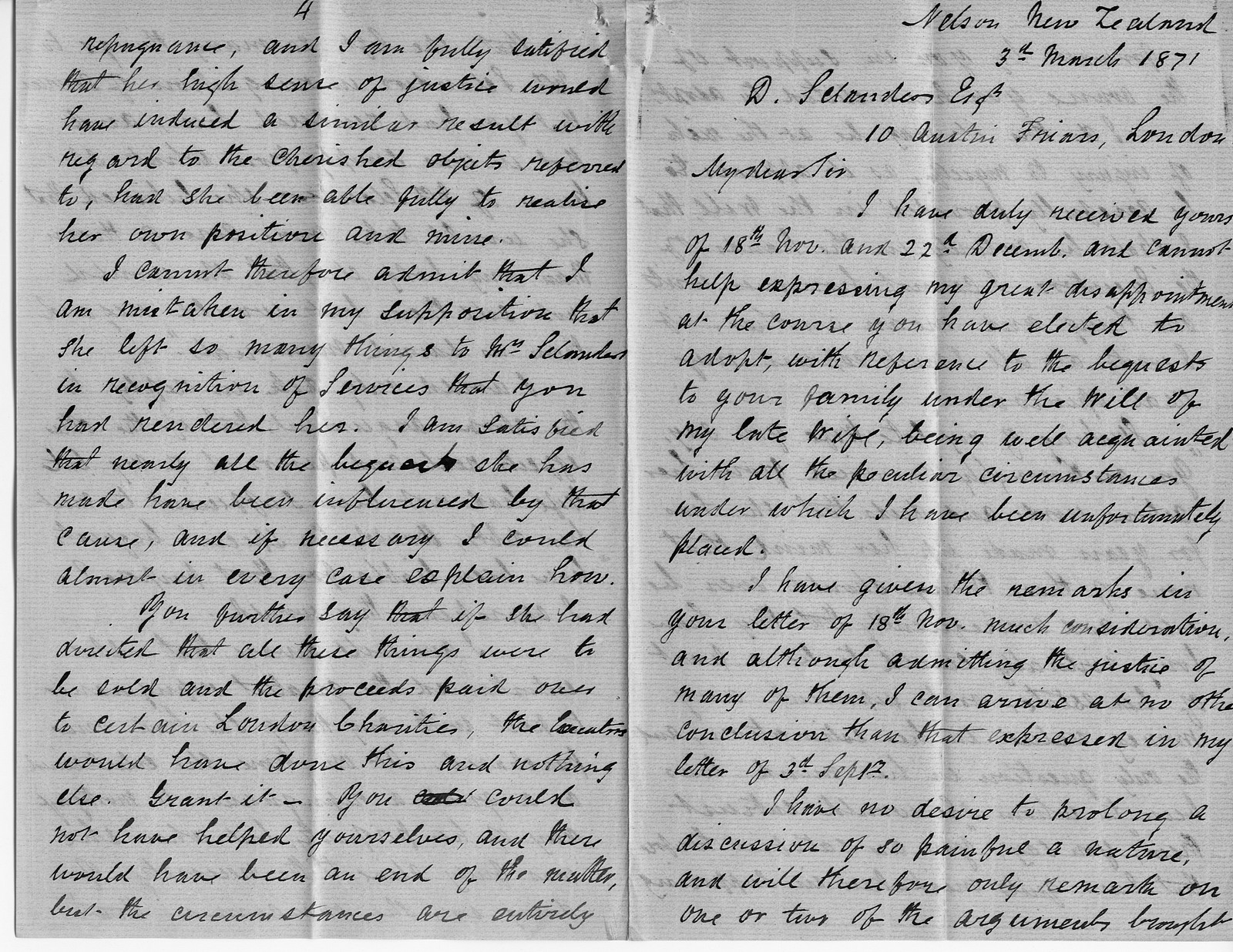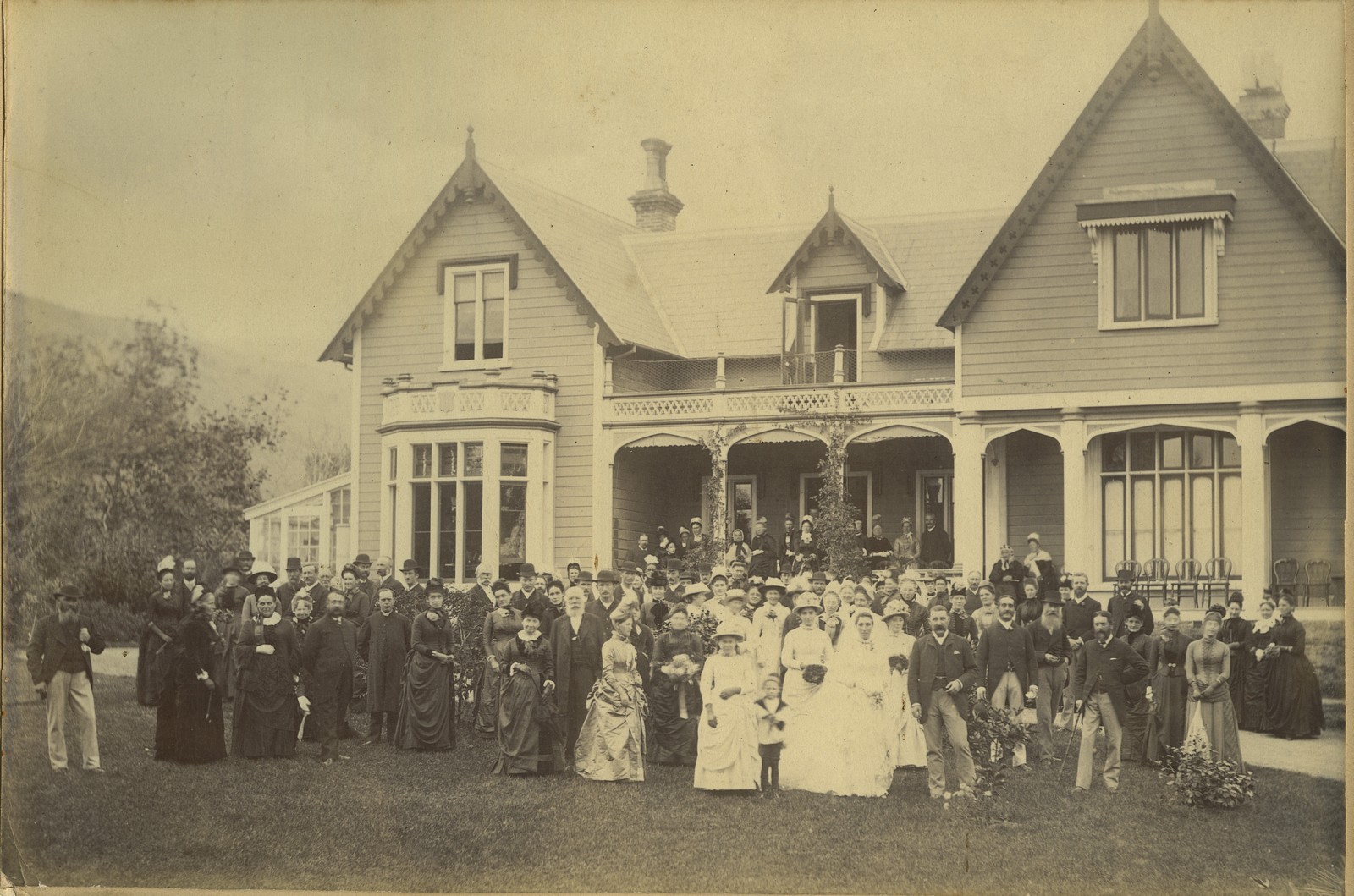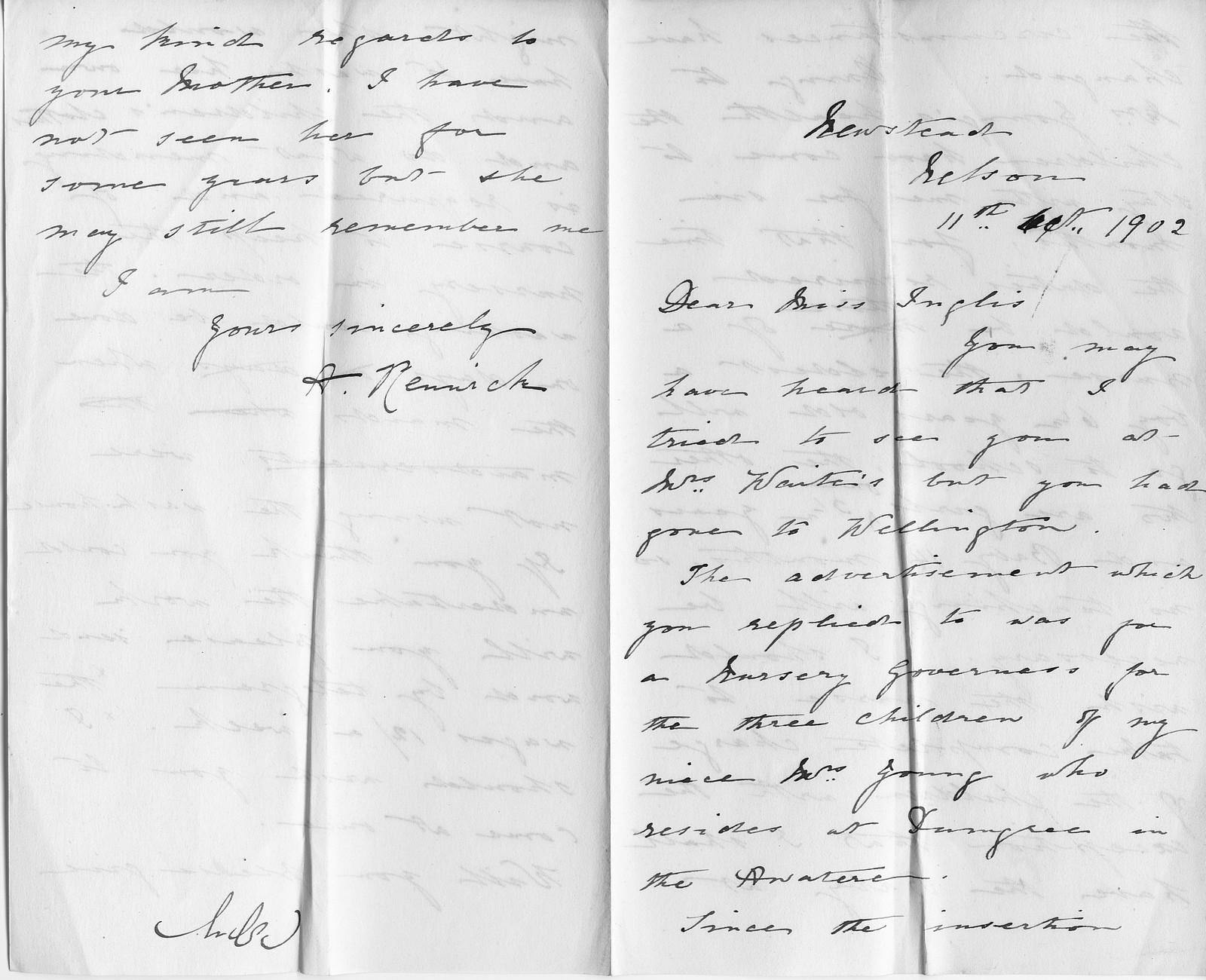The Renwick family
A slice of early colonial life The Marlborough Museum Archives collection has digitised hundreds of letters donated by Annie Ball, which relate to the life of Dr Thomas Renwick’s family. Renwick family group. Standing l-r: Allie Roberston (Anne's niece), Tom Renwick, Anne Renwick.
A slice of early colonial life
The Marlborough Museum Archives collection has digitised hundreds of letters donated by Annie Ball, which relate to the life of Dr Thomas Renwick’s family.
In 1846, Dr Renwick married Adeline Absolom, a wealthy woman but one with a "dubious reputation.”1 Her money enabled them to buy land in Marlborough’s Awatere and Waihopai Valleys and, while their home was in Nelson, Thomas spent a lot of time travelling to these properties. By the late 1860s, Adeline returned to London, following an affair, where her health deteriorated. On 5 November 1868, Thomas wrote to her expressing concern about her health:
“My dearest Adeline……It would be unkind of me in your present weak state of health to ask you to undertake the fatigue of the voyage out, although I should be glad to see you out here. Unless your health is improved by your trip to the Isle of Wight, I feel that I cannot expect you to undertake the voyage.” He continued: “Nelson is very dull at present, and everyone is complaining of the badness of the times, but the same is the case all over New Zealand both politically and commercially, and now to add to our troubles, the Natives are becoming troublesome in the Northern Island, which means more money to be borrowed and more taxes to be imposed on a colony already suffering from too heavy taxation – all this tends to lessen the value of property.”2
Adeline separated from Renwick in 1869 and died a year later. She had made a number of wills over the years and her last one required that Dumgree be sold - however, Thomas managed to purchase it with his few remaining funds.3
On 3 March 1871, Renwick wrote to a Mr Sclanders expressing great disappointment about bequests from his ex-wife to Mrs Sclanders. “(You are) well acquainted with all the peculiar circumstances under which I have been unfortunately placed.” He notes that his ex-wife has left him entirely in the hands of the executors of the Will. “My late wife in making her Will, believed that she was dealing fairly with my equitable claims on her estate, as has always been her intention, but not being able to realise the great depreciation that has taken place in the value of her property, she has unintentionally done me a wrong, by leaving the most valuable part of her personal effects to Mrs Sclanders, who has no claim of any kind upon her.”4
Whether or not Renwick got any satisfaction from Mr and Mrs Sclanders, his life was to take a happier turn and, at the beginning of 1872, he married Anne Smith.5 It is clear he found love with Anne, as his letters show a different side to the reserved Scotsman who wrote business-like letters to his first wife.
In a letter dated just ‘Blenheim, Thursday morning’, he wrote: “My own dear Annie, How glad darling I should be if I could return on Saturday, but I have to go to Delta (a farm they owned in the Waihopai Valley) again and it will take me two or three days to finish there……no end of love to my own dear wife, I am your own hubby. Thomas”6
And on 22 December 1873 he began a letter from the Delta Dairy: “My own darling Annie, mine you observe and no other bodies…”7
The couple bought Newstead in central Nelson in 1877 and on February 28, 1878, Renwick received a letter from John Scott, builder and contractor of Nelson with a quote of three shillings sixpence for ‘executing Plaster Cornice in the hall at Newstead in accordance with the plan supplied by John Scotland…..An early answer will oblige as the plasterer will finish by midday tomorrow.”8
Renwick died on May 29 1879 aged 61. The Married Women’s Property Act came into effect in 1884 and gave married women a legal existence and the right to own property for the first time. Dumgree came to his wife Anne;9 Renwick had left it to his nephew Tom, but he refused to take it over.10 Anne Renwick did not remarry and seems to have capably taken up the reins of the life Renwick and she had been making together. On 6 April 1887, she hosted the wedding of her niece Phyllis Renwick to Mr A. Hamilton at Newstead.
Several letters from 1902 show her to have been fully involved in the life of Dumgree in the Awatere Valley. On 23 January 1902, she received a letter from the manager of Dumgree (also her nephew) R. Young. He wrote: “Therefore I do not expect high prices for stock this year even with the price of frozen meat advancing in London.”11
Mr Young wrote again on 10 May 1902. “I have just received a letter from the Seddon Sports committee asking if you would be willing to dispose of 60-70 acres near the Dumgree Railway Station….and if you are not prepared to sell, would you let or lease. This I take to be a formal request such as was made to me unofficially last year when I obtained your permission to allow them to hold Boxing Day races and sports in the Manuka paddock.”12
In 1902 Mrs Renwick wrote from Newstead to a Miss Inglis who had responded to an advertisement for a nursery governess: “The advertisement which you replied to was for a nursery governess for the three children of my niece Mrs Young who resides at Dumgree in the Awatere. Since the insertion, the circumstances have changed. Owing to Mrs Young’s health, the children have come to stay with me for six months. For that time the duties required will be those of a nurse.” She explained that the oldest child, a boy, would go to school and the two younger girls would not require teaching. She added: “I should wish the nurse to take complete charge of the children with the exception that I shall have the baby at night.”13
Anne Renwick died in 1937 and Dumgree was farmed Dr Renwick's nephew Tom, who had taken over Dumgree in 1918. On his death it was left to another Renwick family member.14 It was sold out of the family in 1977.
2017 (with additions by Elisabeth Airey, 2019)
Updated September 2020
Story by: Joy Stephens
Sources
- Airey, E. (2014) For the sake of my daughter. Elisabeth Airey: Wellington, p.77
- Ball Collection 2010.116.0001. Marlborough Museum Archives Renwick Collection: Letter 186
- Airey (2014), pp. 79-80
- Ball Collection: Letter 243
- Airey, E. (1979) Renwick: the story of a pioneer family. Wellington, N.Z.: Elisabeth Airey.
- Ball Collection: Letter 916
- Ball Collection: Letter 837
- Ball Collection: Mrs Renwick 1878070
- Else, A. 'Gender inequalities - Marriage, family and sex', Te Ara - the Encyclopedia of New Zealand (accessed 20 September 2017)
https://teara.govt.nz/en/gender-inequalities/page-2 - Airey (2014), p.100
- Ball Collection: Letter 455
- Ball Collection: Letter 495
- Ball Collection: Letter 469
- Airey (2014), p.106; Airey (1979) pp 70-72 and 76
Further Sources
Books
- Airey, E. (2014) For the sake of my daughter. Elisabeth Airey: Wellington
http://www.worldcat.org/oclc/900635845 - Airey, E. (1979) Renwick: the story of a pioneer family. Wellington, N.Z.: Elisabeth Airey
http://www.worldcat.org/oclc/6943122
Websites
- Marlborough Museum. Virtual exhibit. Dumgree photograph album.
https://virtualexhibit.marlboroughmuseum.org.nz/fsa/vewebsite4/exhibit3/vexmain3.html
